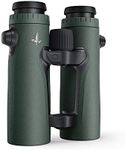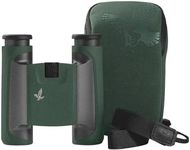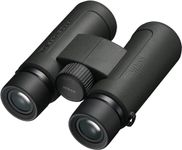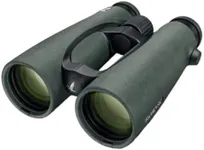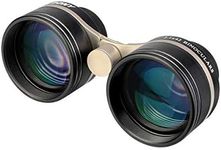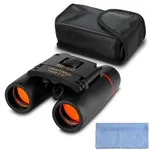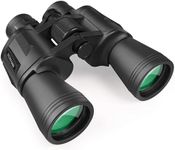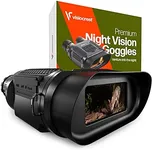Buying Guide for the Best Bow Hunting Binoculars
Choosing the right bow-hunting binoculars can significantly enhance your hunting experience. The right pair will help you spot game from a distance, judge their size, and navigate the terrain more effectively. When selecting binoculars for bow hunting, it's important to consider several key specifications to ensure they meet your needs and preferences. Here are the key specs to look out for and how to choose the best fit for you.MagnificationMagnification refers to how much closer the object appears through the binoculars compared to the naked eye. For bow hunting, a magnification of 7x to 10x is generally ideal. Higher magnifications can provide more detail but may also make the image shakier and harder to stabilize without a tripod. Choose a magnification that allows you to see your target clearly without compromising stability.
Objective Lens DiameterThe objective lens diameter is the size of the front lenses of the binoculars, measured in millimeters. Larger diameters (e.g., 42mm or 50mm) allow more light to enter, providing a brighter image, especially in low-light conditions. However, larger lenses also make the binoculars bulkier and heavier. For bow hunting, a balance between light-gathering ability and portability is crucial, so consider lenses around 42mm.
Field of ViewField of view (FOV) is the width of the area visible through the binoculars at a specific distance, usually measured in feet at 1,000 yards. A wider FOV allows you to see more of the landscape, which is beneficial for tracking moving game. For bow hunting, look for a FOV of at least 300 feet at 1,000 yards to ensure you can easily spot and follow animals.
Weight and SizeThe weight and size of the binoculars affect how comfortable they are to carry and use for extended periods. Lightweight and compact binoculars are easier to handle and less tiring to carry around. However, they may have smaller objective lenses and lower light-gathering capabilities. Choose a pair that balances comfort with performance, ensuring they are not too heavy or bulky for your hunting trips.
Durability and Weather ResistanceDurability and weather resistance are crucial for outdoor activities like bow hunting. Look for binoculars that are waterproof, fog-proof, and have a rugged construction to withstand harsh conditions. Features like rubber armor can provide additional protection against drops and impacts. Ensure the binoculars can handle the environment you will be hunting in.
Eye ReliefEye relief is the distance between your eyes and the eyepieces while still seeing the full field of view. This is especially important for eyeglass wearers. Longer eye relief (15mm or more) ensures that you can use the binoculars comfortably without having to remove your glasses. Choose binoculars with adequate eye relief to ensure a comfortable viewing experience.
Image QualityImage quality is determined by the clarity, brightness, and color accuracy of the view through the binoculars. High-quality optics, such as fully multi-coated lenses and high-density glass, can enhance image quality. For bow hunting, clear and bright images are essential for spotting and identifying game. Test the binoculars if possible to ensure they provide sharp and vivid images.



